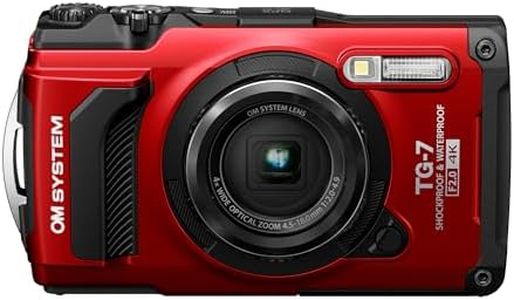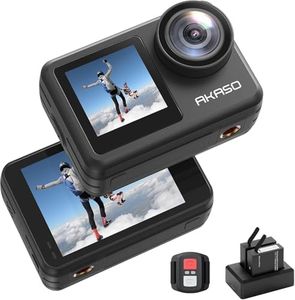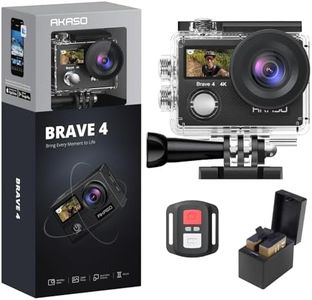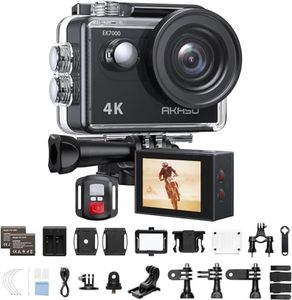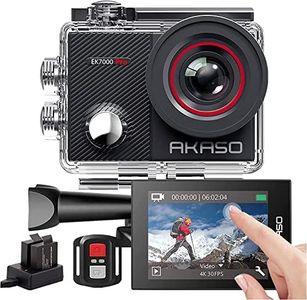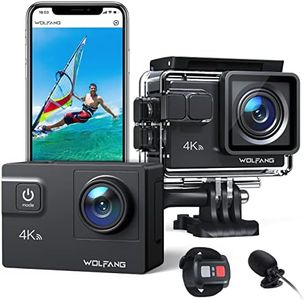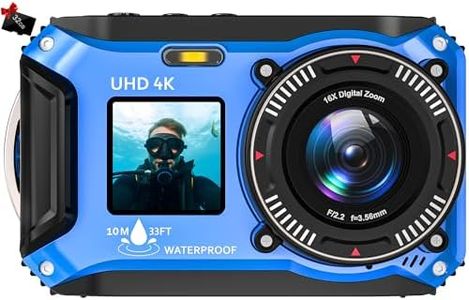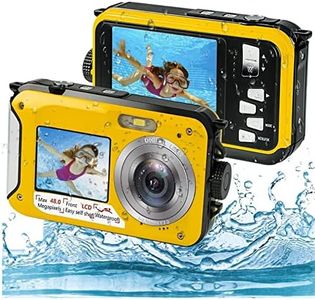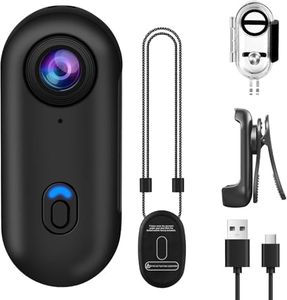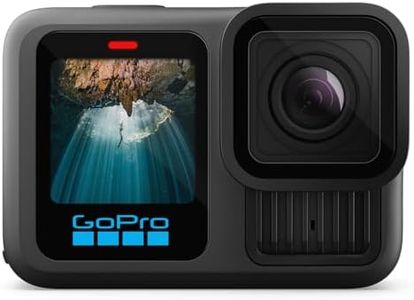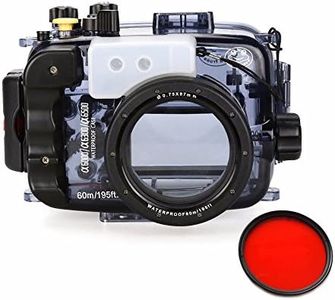We Use CookiesWe use cookies to enhance the security, performance,
functionality and for analytical and promotional activities. By continuing to browse this site you
are agreeing to our privacy policy
10 Best Underwater Scuba Cameras
From leading brands and best sellers available on the web.Buying Guide for the Best Underwater Scuba Cameras
Choosing an underwater scuba camera is an exciting step if you want to capture the wonders beneath the waves. To find the best one for your needs, think about where and how you’ll be diving, along with how experienced you are in both photography and scuba diving. Understanding the main features will help you match a camera with the adventures you plan, whether it’s casual snorkeling or deep technical dives. Your aim should be to balance ease of use, image quality, and durability so you can focus on enjoying your dive and getting great shots.Waterproof Depth RatingThis specification tells you how deep the camera can go underwater without getting damaged. If you plan on snorkeling or shallow dives, a lower rating is fine (up to about 10 meters). Recreational scuba divers usually go up to 40 meters, so you'll want a camera that can handle at least this depth. If you're into technical or deep dives, look for ratings of 50 meters or more. Match this value to the depth you expect to reach on your dives to ensure your camera stays safe and functional.
Image Quality (Sensor Size and Megapixels)Image quality mostly depends on the camera’s sensor size and megapixel count. A larger sensor can capture more detail and perform better in low light, which is common underwater. Megapixels affect how large you can print or crop your photos. For casual snapshots, a modest sensor and fewer megapixels (12–16MP) work fine, but for professional or artistic shots, lean toward larger sensors and higher megapixel counts. Consider how you’ll use your photos: for social media, basic options are enough; for large prints or magazines, opt for better quality.
Lens and Zoom CapabilityThe lens determines what kinds of scenes you can capture, from wide reefs to close-ups of sea creatures. Fixed wide-angle lenses work well for landscapes and group shots, while models with optical zoom let you get closer to distant fish without disturbing them. If macro or close-up shots interest you, check for macro modes or lens attachments. Think about your favorite subjects—reefs, fish, wrecks—or your usual diving environments to choose the lens options that best fit those needs.
Ease of Use (Controls and Menus)Underwater, you’re often wearing gloves and need to act fast. Simple, large, and clearly labeled buttons or controls are easier to operate. Some cameras offer touchscreens, but these might not work well underwater or with gloves. Beginners will benefit from cameras with automatic modes, while advanced users may want manual settings for more creative control. If ease and speed are important, prioritize intuitive controls over complicated menus.
Video CapabilitiesMany cameras can shoot video as well as still photos, but the video quality varies. Standard HD is fine for casual clips, while 4K is best for sharper, higher-quality footage, especially if you plan to edit or view on bigger screens. For action shots, look for higher frame rates for smooth slow motion. Think about whether you want to capture just memories, or create high-quality videos for editing and sharing—match the camera’s video spec to your ambition.
Battery LifeBattery life tells you how long the camera can operate before needing a recharge. Underwater shooting uses more power, especially when using the screen or flash. Short dives and day trips may not need much battery capacity, but for longer excursions or back-to-back dives without charging opportunities, a longer-lasting battery is important. Consider how many photos or videos you want to take per dive and whether you can recharge between dives to pick appropriately.
Housing and Build QualityThe camera’s housing is its waterproof shell and needs to be tough to withstand water pressure and rough handling. Some cameras have built-in waterproofing, while others need a separate housing. Make sure the housing is reliable and easy to seal, with buttons that align properly. Frequent divers or those exploring rough environments should prioritize durability, while occasional snorkelers may get by with lighter options.
Expandability (Accessories and Mounting Options)Expandability covers how well the camera can work with external strobes (flashes), filters, mounts, and other accessories. Extra lighting is especially useful underwater since colors fade quickly as you go deeper. If you plan to grow with your photography—adding lights, filters, or mounts for helmets or rigs—choose a system with broad accessory compatibility. If you want something lightweight and simple, minimal expandability is fine.
